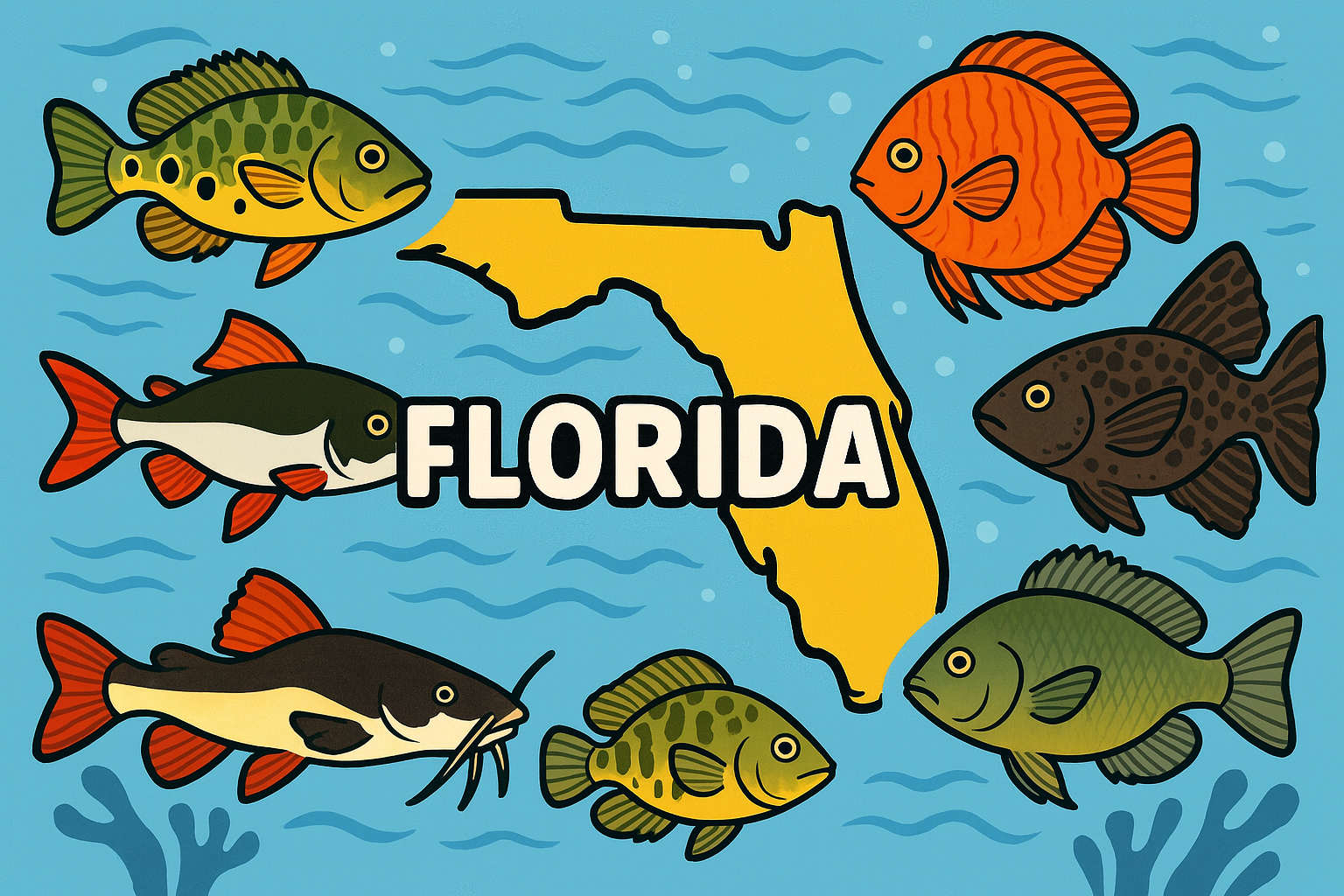Hurricanes, Fish Farms & Invasive Populations in Florida
🌪️ Hurricanes, Fish Farms & Invasive Populations in Florida
🐟 1. The Aquaculture Landscape in Florida
- 📍 Geography: Florida’s subtropical climate makes it the U.S. hub for ornamental aquaculture (over 800 species, 90% of U.S. ornamental exports). Most farms are in Miami-Dade, Hillsborough, and Polk counties.
- 🐠 Species farmed:
- Ornamental tropicals → oscars, plecos, pacu, cichlids, tetras, gouramis.
- Food fish → tilapia, hybrid striped bass, catfish.
- 🌱 Farming methods: Shallow, outdoor earthen ponds (1–2 acres, 1–2 m deep) connected to canal networks for water exchange.
- ⚠️ Weak point: These canals are directly hydrologically connected to the Everglades, rivers, and coastal estuaries.
🌊 2. How Hurricanes Breach Farm Systems
- 🌪️ Storm surge & flooding: Heavy rains overflow ponds into adjacent canals.
- 💨 Wind & debris damage: Screens, pumps, and barriers fail.
- 🛑 Power outages: Farmers can’t pump ponds down → water overtops.
- 🚪 Escape routes: Thousands of fish flush into canals, ditches, and stormwater drains.
- 🗺️ Florida’s canal system: A manmade highway for fish dispersal, often connecting farms → canals → rivers → Everglades.
🧬 3. Why Hurricane Escapes Lead to Invasions
🧩 High Propagule Pressure
- Hurricanes don’t release a few fish — they can release millions.
- In invasion biology, high propagule pressure dramatically raises the chance of successful establishment.
🌡️ Climate Match
- Florida’s climate = nearly identical to South America & SE Asia for many tropical species.
- Warm winters allow year-round survival, unlike other U.S. states.
🛡️ Lack of Natural Controls
- Native predators may eat some escapees, but don’t regulate them (not co-evolved).
- Many invasives (e.g., tilapia, oscars) are aggressive, fast breeders, and defend nests.
🧪 Aquaculture Selection
- Farmed fish are often hardy, fast-growing, and disease-tolerant strains.
- This makes them pre-adapted to thrive in disturbed or novel habitats.
🐠 4. Case Studies in Florida
🐡 Walking Catfish (Clarias batrachus)
- Origin: SE Asia.
- 1960s: Escaped Miami fish farms during floods.
- Traits: Air-breathing, “walk” over land, aggressive predators.
- Now: Widespread in south Florida canals, competing with native catfish.
🐠 Oscars (Astronotus ocellatus)
- Origin: Amazon Basin.
- Pathway: Likely both aquarium releases and farm escapes during storms.
- Traits: Territorial, high reproductive success, prey on small fish.
- Now: Established in canals across south Florida; compete with native sunfish and bass.
🐟 Tilapia (Oreochromis spp.)
- Origin: Africa.
- Escaped repeatedly from ponds during floods/hurricanes.
- Traits: Mouthbrooders → strong parental care = high fry survival.
- Now: Abundant in lakes and canals; displace natives by taking over spawning sites and altering vegetation.
🐠 Plecos (Pterygoplichthys spp.)
- Origin: South America.
- Farmed for aquarium trade, also released during hurricanes.
- Traits: Dig burrows → bank erosion, displace native algae-grazers, damage manatee seagrass feeding areas.
- Now: Dense populations in canals, rivers, and springs.
🦠 5. Ecological & Economic Consequences
- 🐟 Competition: Invasives outcompete native sunfish, catfish, and minnows.
- 🌱 Habitat destruction: Pleco burrows destabilize canal banks → infrastructure damage.
- 🦐 Food web disruption: Tilapia change algal/invertebrate balance; oscars prey on small natives.
- 🐦 Predator diet shifts: Wading birds, otters, and gators consume invasives → natives lose protection.
- 💸 Economic damage: Millions spent annually on invasive control and canal maintenance.
📊 Why Hurricanes Matter More in Florida
| Factor | Florida’s Situation |
|---|---|
| 🌪️ Storm frequency | High (regular hurricanes & tropical storms) |
| 🌡️ Climate | Tropical/subtropical → year-round survival |
| 🗺️ Hydrology | Farms tied to canals → direct escape routes |
| 🐠 Industry scale | Thousands of ponds → huge propagule pressure |
| 🛡️ Ecological context | Many niches available + weak predation on exotics |
✅ Summary
Hurricanes in Florida act as biological floodgates:
- 🌪️ Destroy containment → release millions of non-native fish.
- 🌡️ Climate match + aquaculture-selected hardiness → high survival.
- 🐟 Escapees establish breeding populations in canals, rivers, and Everglades.
- 🌱 These invasives reshape ecosystems, compete with natives, and cause economic damage.
⚖️ Management Note: Florida has tried mitigation (elevated ponds, double barriers, requiring non-reproductive hybrids), but with increasing storm intensity under climate change, aquaculture escapes will remain a major invasion pathway.

Powered by Lightspeed
Display prices in:USD